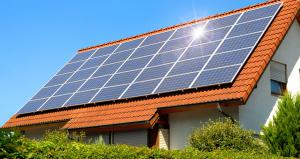Understanding the Basics of Solar Power
With more information, South Africans can make efficient choices regarding their circumstances.
CAPE TOWN, WESTERN CAPE, SOUTH AFRICA, December 19, 2018 /EINPresswire.com/ -- What keeps South Africans from switching to solar power? Is it the dynamics behind these systems and how they ultimately work? Because not having a basic understanding of something is a valid reason for not spending money on it. Plus, the concept of “free” energy when money needs to be spent on equipment can create doubts.But with solar arrays, it literally takes five to ten minutes to know what they are all about. In fact, this article should prove the latter point.
The make-up of a solar array can be divided into three main sections, namely the panels, the inverter, and the added accessories. When the installation is done, these are the basic focus points, and the process remains as basic as it sounds.
- Solar Panels
These do not have any moving components, which mean they do not require maintenance and can last for long periods at a time. Inside the panels are silicon cells, which are packed in different ways depending on the manufacturer of the panel. In other words, the quality of the panels will differ according to the manufacturer.
In terms of what a singular panel can power inside the home, there are various ranges available. However, the most common range can be anything from 150 up to 300 watts per panel. It should also be noted that panels are installed to combine the energy harvested from the sun. That means three panels can provide up to 900 watts of power inside the home.
- Inverter
The inverter is responsible for converting the DC energy from the panels to AC energy. Without this piece of equipment, the energy from the panels cannot be utilised. Just like the panels, inverters last for several years and do not require detailed maintenance if properly sustains efficiency. A quality inverter should be useful within a system for several years to come.
- Accessories
Optional equipment can be installed to increase the efficiency of the system, or simply to monitor it with more detail. For example, a battery-bank allows for solar energy usage throughout the night and on cloudy days. Solar geysers are popular for significantly reducing the electric bill, and even pool pumps can be powered by the sun.
As for the concept of free energy, it is a reality after the investment has been made. Solar equipment from reputable brands is becoming more affordable in the South African market, thanks to direct connections like Solar Advice. But the important factor to remember is the lifespan associated with solar equipment.
With a stable installation and no moving parts, solar arrays can supplement energy for several years, while they quickly pay for themselves when comparing prices with Eskom. The basics of solar energy are more basic than people think, and at this point in time, is there be a better or more affordable alternative?
A Da Silva
Solar Advice
+1 616969153
email us here

